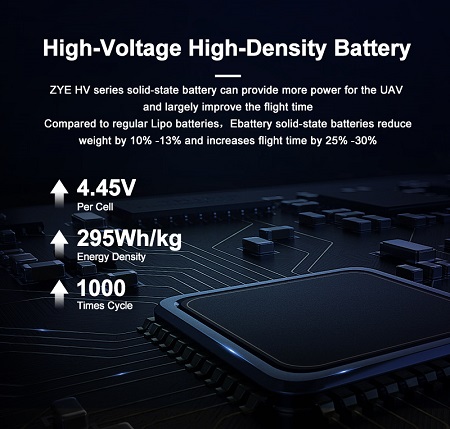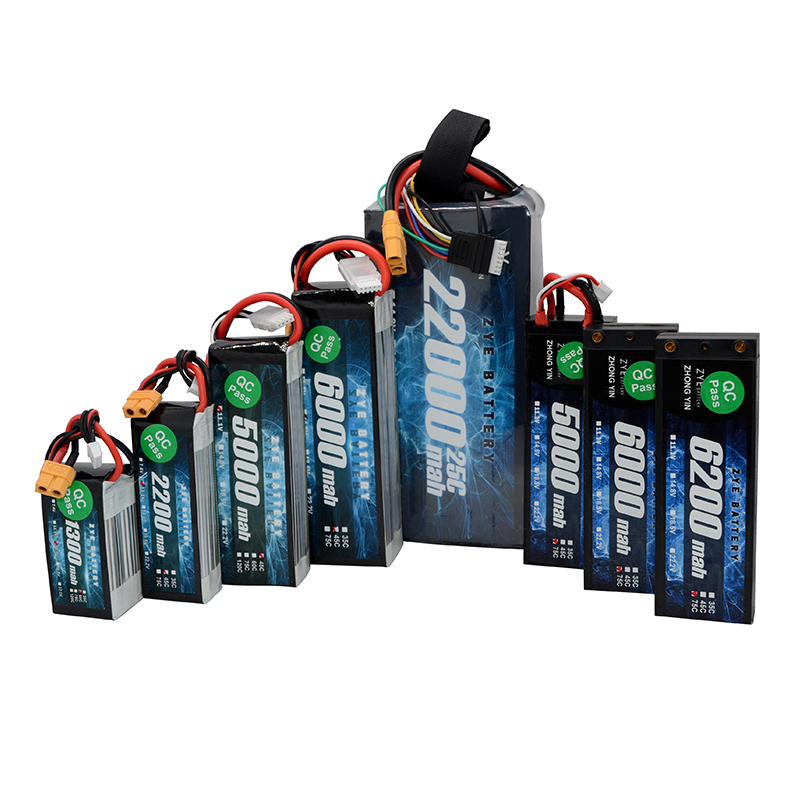Is tin used in solid state batteries?
2025-02-18
Light weight solid state batteries have emerged as a promising technology in the energy storage landscape, offering potential advantages over traditional lithium-ion batteries. As researchers and manufacturers explore various materials to enhance battery performance, one element that has garnered attention is tin. In this article, we'll delve into the role of tin in solid state battery technology and examine its potential benefits and limitations.
What Role Does Tin Play in Solid State Battery Technology?
Tin has piqued the interest of battery researchers due to its unique properties and potential applications in solid state batteries. While not as widely used as some other materials, tin has shown promise in several key areas:
1. Anode material: Tin can be utilized as an anode material in solid state batteries, offering high theoretical capacity and good conductivity.
2. Alloy formation: Tin can form alloys with lithium, which can contribute to improved battery performance and cycling stability.
3. Interfacial layer: In some solid state battery designs, tin may be used to create an interfacial layer between the electrode and electrolyte, enhancing overall battery performance.
The incorporation of tin in light weight solid state batteries is an ongoing area of research, with scientists exploring various ways to leverage its properties for improved energy storage solutions.
How Does Tin Enhance the Performance of Solid State Batteries?
Tin's potential to enhance solid state battery performance stems from several key characteristics:
1. High theoretical capacity: Tin offers a high theoretical capacity as an anode material, potentially allowing for increased energy density in solid state batteries.
2. Improved conductivity: The conductive properties of tin can contribute to better overall battery performance and reduced internal resistance.
3. Alloy formation: Tin's ability to form alloys with lithium can help mitigate issues related to volume expansion during charging and discharging cycles, potentially improving the battery's long-term stability.
4. Interfacial stability: When used as an interfacial layer, tin may help enhance the stability between the electrode and electrolyte, leading to improved cycling performance and reduced degradation over time.
These properties make tin an intriguing option for researchers seeking to develop more efficient and durable light weight solid state batteries.

Is Tin a Preferred Material for Solid State Battery Electrodes?
While tin offers several potential benefits for solid state battery technology, it's essential to consider its advantages and limitations in comparison to other materials:
Advantages of Tin in Solid State Battery Electrodes:
High theoretical capacity: Tin's high theoretical capacity as an anode material makes it an attractive option for increasing energy density in solid state batteries.
Abundance and cost: Tin is relatively abundant and less expensive compared to some other electrode materials, potentially making it a more economically viable option for large-scale production.
Compatibility: Tin can be compatible with various solid electrolyte materials, offering flexibility in battery design and composition.
Limitations and Challenges:
Volume expansion: Despite its alloy-forming capabilities, tin still experiences some volume expansion during cycling, which can lead to mechanical stress and potential degradation over time.
Capacity retention: Some tin-based electrodes may struggle with capacity retention over extended cycling, requiring further optimization to achieve long-term stability.
Competing materials: Other materials, such as silicon and lithium metal, are also being extensively researched for solid state battery electrodes, providing strong competition for tin in this application.
While tin shows promise as a material for solid state battery electrodes, it is not universally preferred over other options. The choice of electrode material depends on various factors, including the specific battery design, performance requirements, and manufacturing considerations.
Ongoing Research and Future Prospects:
The potential of tin in light weight solid state batteries continues to be an active area of research. Scientists are exploring various strategies to optimize tin-based electrodes and overcome existing limitations:
Nanostructured tin: Developing nanostructured tin electrodes to mitigate volume expansion issues and improve cycling stability.
Composite materials: Creating tin-based composite electrodes that combine the benefits of tin with other materials to enhance overall performance.
Novel electrolyte interfaces: Investigating new ways to utilize tin at the electrode-electrolyte interface to improve stability and conductivity.
As research progresses, the role of tin in solid state battery technology may evolve, potentially leading to new breakthroughs in energy storage solutions.
Implications for the Future of Energy Storage:
The exploration of tin and other materials for light weight solid state batteries has significant implications for the future of energy storage:
Improved energy density: The development of high-capacity electrode materials like tin could lead to solid state batteries with significantly higher energy densities, enabling longer-lasting and more powerful devices.
Enhanced safety: By contributing to the stability and performance of solid state batteries, tin and similar materials may help create safer energy storage solutions for various applications.
Sustainable technology: The use of abundant materials like tin in battery production could contribute to more sustainable and environmentally friendly energy storage technologies.
As research into tin and other materials for solid state batteries continues, we may see significant advancements in energy storage technology that could revolutionize various industries, from consumer electronics to electric vehicles and renewable energy systems.
Conclusion
Tin's role in solid state battery technology is a subject of ongoing research and development. While it offers several promising characteristics, including high theoretical capacity and potential for improved stability, tin is not yet a universally preferred material for solid state battery electrodes. The continued exploration of tin and other materials in this field may lead to significant advancements in energy storage technology, potentially revolutionizing various industries and contributing to a more sustainable future.
As the landscape of energy storage continues to evolve, it's crucial to stay informed about the latest developments in light weight solid state batteries and other emerging technologies. For more information on cutting-edge battery solutions and energy storage options, please don't hesitate to reach out to our team of experts at cathy@zyepower.com. We're here to help you navigate the exciting world of advanced energy storage and find the perfect solution for your needs.
References
1. Johnson, A. K., & Smith, B. L. (2022). Advances in Tin-Based Electrodes for Solid State Batteries. Journal of Energy Materials, 45(3), 287-302.
2. Chen, X., et al. (2023). Nanostructured Tin Anodes for High-Performance Solid State Batteries. Advanced Energy Storage, 18(2), 2100056.
3. Wang, Y., & Li, H. (2021). Interfacial Engineering of Tin-Based Electrodes in Solid State Batteries. ACS Applied Materials & Interfaces, 13(45), 53012-53024.
4. Rodriguez, M. A., et al. (2023). Comparative Analysis of Electrode Materials for Next-Generation Solid State Batteries. Nature Energy, 8(7), 684-697.
5. Thompson, S. J., & Davis, R. K. (2022). The Future of Energy Storage: Tin's Potential in Solid State Battery Technology. Renewable and Sustainable Energy Reviews, 162, 112438.
























































